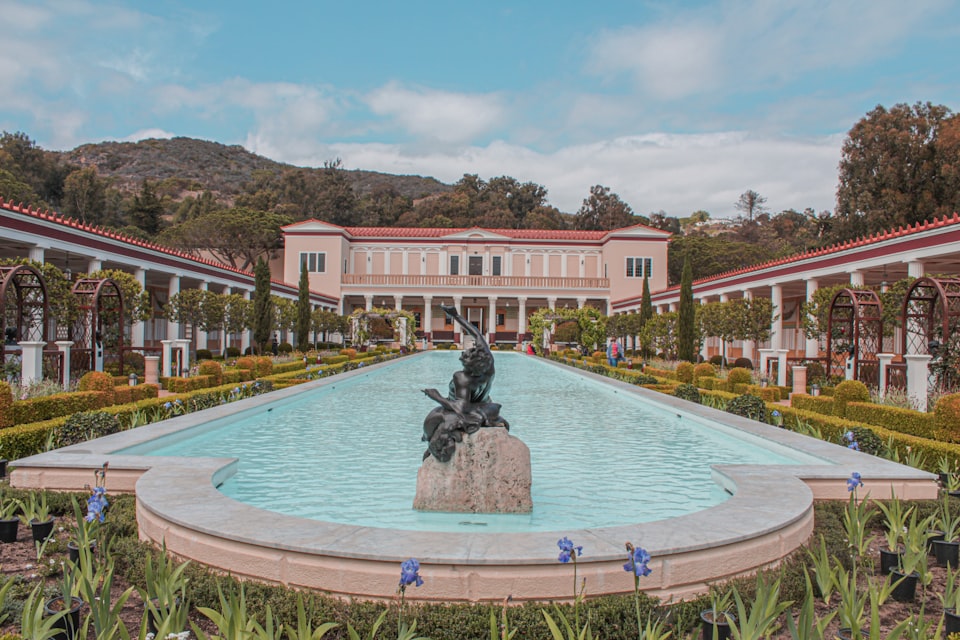Ancient Roman Gardens

The ancient Persian and Greek Empires created some of the earliest known designed gardens, and these were all in royal residences or other hallowed grounds. With the advent of the Roman Empire, we started to see gardens in more modest residential homes. Roman houses were built around a peristyle courtyard that contained a planted garden. The word peristyle is derived from greek: peri meaning surrounded and style meaning columns, thus a peristyle courtyard is a courtyard surrounded by columns. In Roman times, this type of courtyard garden was called a peristylum. The peristyle courtyard home design was popular in ancient Greece but would have normally been decorated with pots, not a manicured landscape.

Along with the peristyle concept, greek culture was very influential on Roman garden design. Roman gardens were often decorated with Greek or Greek inspired sculptures, even more so after Rome conquered Greece in 146 BC. The roman words toparius and topiaria meaning "Gardener" and "Gardening" were taken from the Greek language.
Unlike the previous great civilizations of the western world that were mostly centered in or near the middle east, the Roman empire stretched across a broad range of climates. The Roman style of garden design was not regional which led to plants being introduced to areas where they were not native. Many of the common plants we see used in Modern European Gardens were selected for cultivation by Roman gardeners. For example, Roman colonists in ancient Britain created their villa gardens using popular plants from their homeland such as Roses, Rosemary and Boxwood, all of which are common sights in modern English Gardens.
Romans invented Concrete, which allowed them to really shape their landscapes in imaginative ways, however this type of material choice and the exporting of plants from Rome to far reaches of the empire is also the start of unsustainable garden design practices. As unwanted concrete patios are demolished and sent to landfills in the modern age, so too were old materials in the Roman era. Rome is said to be formed of 8 hills, one of which is completely artificial as ancient Romans used the site of Monte Testaccio as a dumping ground for used pots to create a hill over 100 feet in height.
Hortus
In ancient times, villas were often self-sustaining with the use of kitchen gardens. A roman villa usually included an Herb Garden (Hortus) to supply the household kitchen with herbs and vegetables. Fruit Trees were planted for their produce, as well as a source of shade for respite from the Mediterranean sun. The hortus was often designed in a similar form to the peristyle courtyards, with bilateral symmetry the main driving force of the layout. The beneficial plants grown in the hortus would be arranged as much by their colour, structure and fragrance as well as their medicinal/gastronomical qualities.

Legacy of Roman Gardens
Gardening in the Roman age established many other practices in modern horticulture, such as topiary, espalier, planting in rows and growing plants in hothouses (greenhouses). Pliny the Elder wrote about Roman Greenhouses: “consisted of beds mounted on wheels which they moved out into the sun and then on wintry days withdrew under the cover of frames, glazed with transparent stone or mica.” These greenhouses were built for Emperor Tiberius so that he could enjoy cucumbers out of season.

The "Outer Peristyle" garden at the Getty Villa in California is a good representation of the grand villa gardens enjoyed by the nobles of Rome, and it does not look out of place even in the modern age.
Unfortunately, after the fall of the Roman Empire in the 5th century A.D., much of the knowledge was lost as the Western World entered the Dark Ages. This knowledge was rediscovered in the age of the Renaissance and heavily influenced the Italian Renaissance Garden Style.
For a more detailed look at Roman home gardens, check out this classic history blog: https://historyandarchaeologyonline.com/ancient-roman-gardens/







Comments ()